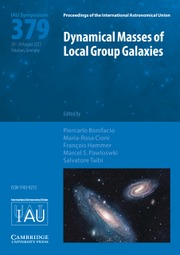No CrossRef data available.
Article contents
How common are Earth-Moon planetary systems?
Published online by Cambridge University Press: 10 November 2011
Abstract
Core share and HTML view are not available for this content. However, as you have access to this content, a full PDF is available via the ‘Save PDF’ action button.
The Earth's comparatively massive moon, formed via a giant impact on the proto-Earth, has played an important role in the development of life on our planet. Here we study how frequently Earth-Moon planetary systems occur. We derive limits on the collision parameters that may guarantee the formation of a circumplanetary disk after a protoplanet collision that could form a satellite. Based on a large set of simulations, we observe potential moon forming impacts and conclude that giant impacts with the required energy and orbital parameters for producing a binary planetary system occur frequently with more than one in ten terrestrial planets hosting a massive moon.
Keywords
Information
- Type
- Contributed Papers
- Information
- Copyright
- Copyright © International Astronomical Union 2011

